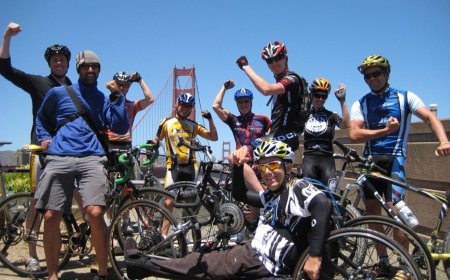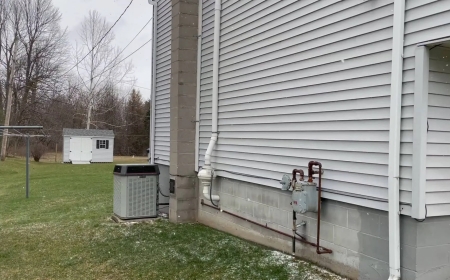How To Hike Addison Circle Dallas
How to Hike Addison Circle Dallas Addison Circle in Dallas, Texas, is more than just a traffic roundabout—it’s a vibrant, pedestrian-friendly urban oasis nestled in the heart of one of the city’s most dynamic neighborhoods. Designed as a green space surrounded by restaurants, shops, and cultural venues, Addison Circle offers an unexpected yet rewarding hiking experience for locals and visitors ali
How to Hike Addison Circle Dallas
Addison Circle in Dallas, Texas, is more than just a traffic roundabout—it’s a vibrant, pedestrian-friendly urban oasis nestled in the heart of one of the city’s most dynamic neighborhoods. Designed as a green space surrounded by restaurants, shops, and cultural venues, Addison Circle offers an unexpected yet rewarding hiking experience for locals and visitors alike. While “hiking” traditionally evokes images of mountain trails and remote wilderness, this guide redefines the term to include urban walking routes that challenge endurance, engage the senses, and connect you with community life. Hiking Addison Circle isn’t about scaling peaks; it’s about immersing yourself in a curated urban landscape that blends nature, art, architecture, and local culture into a single, accessible loop.
Why should you care? Urban hiking is one of the fastest-growing wellness trends in American cities. It promotes physical activity without requiring specialized gear or remote travel. Addison Circle, with its well-maintained pathways, shaded trees, public art installations, and safety features, provides an ideal setting for beginners and seasoned walkers to build stamina, reduce stress, and explore Dallas beyond its highways and skyscrapers. Whether you’re looking to replace your treadmill session, enjoy a mindful morning walk, or introduce your family to outdoor activity in a safe, welcoming environment, hiking Addison Circle delivers measurable health benefits and unforgettable experiences.
This comprehensive guide walks you through every aspect of planning, executing, and enhancing your hike around Addison Circle. From the exact route to take, to what to wear, when to go, and how to make the most of your time there, you’ll leave with a clear, actionable blueprint. We’ll also share best practices, essential tools, real-life examples from regular hikers, and answers to frequently asked questions—all designed to turn a simple walk into a meaningful, repeatable ritual.
Step-by-Step Guide
Hiking Addison Circle is deceptively simple—yet the difference between a casual stroll and a purposeful, rewarding hike lies in preparation and awareness. Follow these seven detailed steps to ensure your experience is safe, enjoyable, and optimized for maximum benefit.
Step 1: Understand the Route
Addison Circle is a 0.7-mile circular pedestrian path that encircles a central green space at the intersection of Addison Road and Dallas North Tollway. The path is fully paved, ADA-accessible, and clearly marked with directional signage. The entire loop takes approximately 15–20 minutes to complete at a moderate walking pace, but you can extend your hike by incorporating adjacent trails, such as the Addison Trail Extension or the nearby Stemmons Corridor Greenway.
To begin, locate the main entrance near the intersection of Addison Road and Midway Road. There are multiple access points, but this one offers the most parking and the clearest signage. Once on the path, walk clockwise to follow the most commonly used route. This direction aligns with prevailing foot traffic, reduces congestion, and places you in optimal view of the public art installations and outdoor seating areas.
Step 2: Choose the Right Time
Timing is critical for comfort and safety. The best hours to hike Addison Circle are between 6:00 AM and 9:00 AM, and between 4:00 PM and 7:00 PM. Morning hikes offer cooler temperatures, fewer crowds, and the chance to see local residents starting their day with coffee or yoga in the park. Evening hikes are ideal for sunset views, as the western exposure casts golden light across the trees and fountains, creating a tranquil atmosphere.
Avoid midday hikes between 11:00 AM and 3:00 PM during summer months (May–September), when temperatures can exceed 95°F with high humidity. Even with shade, the paved surface radiates heat. Winter months (November–February) are ideal for longer hikes, with average highs in the 50s and 60s. Always check the local weather forecast before heading out.
Step 3: Dress Appropriately
While you don’t need technical hiking gear, your clothing choices significantly impact comfort and performance. Wear moisture-wicking, breathable fabrics such as polyester or merino wool blends. Avoid cotton, which retains sweat and can lead to chafing or discomfort.
Footwear is paramount. Choose supportive walking shoes with cushioned soles and good grip. Many hikers opt for trail runners or athletic walking shoes—avoid flip-flops, high heels, or worn-out sneakers. If you plan to hike during rainy seasons, consider water-resistant shoes and a lightweight, packable rain jacket.
Layering is key. Even in spring or fall, temperatures can shift. Bring a light zip-up hoodie or vest you can remove as you warm up. Don’t forget a wide-brimmed hat and UV-blocking sunglasses—sun exposure is significant even on cloudy days.
Step 4: Pack the Essentials
Even on a short loop, carrying a few essentials can transform your hike from a quick walk to a rejuvenating experience:
- Water: Carry at least 16 oz. in a reusable bottle. Hydration stations are available near the east entrance, but don’t rely on them.
- Snacks: A small energy bar, trail mix, or fruit can help maintain blood sugar levels, especially if you’re extending your hike.
- Phone and portable charger: Use your phone for navigation, photos, or emergency contact. A small power bank fits easily in a pocket or waist pack.
- Hand sanitizer or wipes: Public benches and railings are touched frequently. Clean your hands after resting.
- Small towel or bandana: Useful for wiping sweat or cooling your neck on hot days.
Leave bulky items behind. There are no lockers or storage facilities at Addison Circle, so keep your load minimal.
Step 5: Engage with the Environment
True hiking isn’t just movement—it’s mindfulness. As you walk, actively observe your surroundings:
- Notice the seasonal changes in the trees—live oaks, crape myrtles, and redbuds provide color year-round.
- Read the plaques on the public art sculptures. Local artists like Mark Aeling and Susan Harbage Page have contributed pieces reflecting Dallas history and culture.
- Listen to the sounds: birdsong in the morning, children laughing near the playground, live music from weekend outdoor events.
- Engage with the community. Greet fellow hikers. Many regulars know each other by name.
Consider using a journal or voice memo app to record observations, thoughts, or ideas that come to you during your walk. Many hikers report increased creativity and clarity after consistent practice.
Step 6: Extend Your Hike
Once you’ve mastered the core loop, expand your route for greater challenge and variety:
- Addison Trail Extension: Head north from the northeast corner of the circle onto this 1.2-mile paved trail that connects to the Dallas North Tollway Greenway. This adds 2.4 miles round-trip and offers shaded, quieter walking.
- Stemmons Corridor Greenway: From the southeast corner, follow signs to this 3-mile linear park that runs parallel to the highway. It’s less crowded and features native plantings and interpretive signage about local ecology.
- Restaurant Loop: Combine your hike with a cultural experience. Stop at one of the 30+ eateries surrounding the circle—try a coffee at Alibi Coffee Co., a taco at El Tiempo Cantina, or a craft beer at Two Brothers Tavern. Use your hike as a reward system: complete two laps, then treat yourself.
Step 7: Track and Reflect
Use a fitness tracker or smartphone app (like Google Fit, Apple Health, or Strava) to log your distance, time, and calories burned. Aim to increase your pace or distance by 5–10% each week. After 4–6 weeks, you’ll notice improved endurance, mood, and sleep quality.
At the end of each hike, take two minutes to reflect. Ask yourself: How did my body feel? What surprised me? Did I notice something new? This simple habit deepens your connection to the ritual and reinforces motivation.
Best Practices
Consistency and intentionality turn a simple walk into a transformative habit. Here are the most effective best practices for hiking Addison Circle—and for building a sustainable urban walking routine in general.
Walk Regularly, Not Just When You Feel Like It
Research from the American Heart Association shows that walking 150 minutes per week (about 30 minutes, five days a week) reduces the risk of cardiovascular disease by 30%. To make hiking Addison Circle a habit, schedule it like a meeting. Block 20–30 minutes on your calendar three to five times per week. Treat it as non-negotiable.
Use the “Two-Minute Rule” to Overcome Procrastination
If you’re tempted to skip your hike, tell yourself: “I’ll just walk for two minutes.” Often, starting is the hardest part. Once you’re on the path, you’ll likely continue for your full planned time. This psychological trick works because action precedes motivation—not the other way around.
Practice Mindful Walking
Mindful walking involves focusing on your breath, your footsteps, and your senses. Try this technique: inhale for four steps, hold for two, exhale for six. Repeat. This rhythm calms the nervous system and enhances presence. Many hikers report reduced anxiety and improved focus after adopting this practice.
Walk with Purpose Beyond Exercise
Use your hike as a time for problem-solving, journaling, or listening to educational podcasts. Some hikers record voice memos about work challenges. Others listen to audiobooks on history, philosophy, or science. Turning your walk into a mental enrichment session multiplies its value.
Stay Hydrated and Fuel Smartly
Dehydration can mimic fatigue, leading you to believe you’re “too tired” to walk. Drink water before, during, and after your hike—even if you don’t feel thirsty. For longer excursions, pair water with a small amount of electrolytes (a pinch of salt in your water or an electrolyte tablet) to maintain balance.
Respect the Space and Others
Addison Circle is a shared public space. Keep noise levels reasonable, especially near residential areas. Pick up after yourself. Don’t litter, even if others do. If you’re walking with a dog, keep it on a leash and clean up waste immediately. Be courteous to joggers and cyclists who may be using the path.
Track Progress Visually
Use a printed calendar or digital tracker to mark each day you complete your hike. Seeing a streak build—five days, ten days, thirty days—creates powerful psychological reinforcement. Humans are wired to respond to visual progress. A long chain of checkmarks is a motivator no app can replicate.
Invite Others to Join You
Walking with a friend increases accountability and enjoyment. Form a “Circle Walkers” group with coworkers, neighbors, or friends. Even one companion can turn a solitary routine into a social ritual. Group hikes also make it easier to stick with the habit during busy or low-motivation periods.
Tools and Resources
While you don’t need expensive equipment to hike Addison Circle, the right tools can enhance safety, convenience, and enjoyment. Here’s a curated list of the most useful resources available to hikers.
Mobile Applications
- Google Maps: Use the walking directions feature to find the best access points and real-time foot traffic estimates. Enable “offline maps” in case you lose signal.
- AllTrails: Although primarily for wilderness trails, AllTrails has user-submitted reviews and photos of Addison Circle. Search “Addison Circle Loop” for recent conditions, crowd levels, and accessibility notes.
- Strava: Track your route, pace, elevation (minimal here, but useful for consistency), and calories. Join the “Dallas Urban Walkers” group to connect with others.
- Weather Underground: Provides hyperlocal forecasts for Addison. Set alerts for temperature spikes or sudden rain.
Physical Tools
- Reusable water bottle with carabiner: Attach it to your belt or backpack for easy access. Stainless steel or insulated bottles keep water cool for hours.
- Portable phone holder for your arm: Lets you walk hands-free while listening to music or podcasts.
- Mini first-aid kit: Include band-aids, antiseptic wipes, blister pads, and allergy medication. Even short hikes can result in minor scrapes or insect bites.
- Compact folding stool: If you want to pause and rest or sketch, a lightweight stool (under 1 lb) fits in a backpack.
Local Resources
- Addison Chamber of Commerce: Their website (addisonchamber.org) lists upcoming events like outdoor concerts, art walks, and farmers markets that coincide with your hike.
- Dallas Parks and Recreation: Offers free maps of the Addison Trail Extension and seasonal programming like guided nature walks.
- City of Dallas Open Data Portal: Access real-time data on air quality, pedestrian safety counts, and maintenance schedules for the Circle’s lighting and irrigation systems.
Reading and Learning
- “The Art of Walking” by David H. Thoreau: A philosophical take on walking as a form of meditation and resistance to modern haste.
- “Walkable City” by Jeff Speck: Learn why urban design like Addison Circle works—and how to advocate for more such spaces in your community.
- Podcast: “The Daily Walk” by NPR—short episodes (5–10 minutes) that pair walking with storytelling about urban life.
Community Groups
- Addison Circle Walkers Club: A Facebook group with over 1,200 members. Share tips, organize group hikes, and get alerts about path closures or events.
- Dallas Urban Hiking Meetup: Hosts monthly themed walks—“History Walk,” “Photography Walk,” “Family Fun Walk”—all starting at Addison Circle.
Real Examples
Real people, real experiences. Here are three detailed accounts from individuals who’ve made hiking Addison Circle a cornerstone of their routine.
Example 1: Maria, 58, Retired Teacher
“After my knee replacement, my doctor told me to move every day—but I hated gyms. One morning, I walked to Addison Circle just to sit on a bench. I didn’t even walk the whole loop. But I came back the next day. And the next. Now, I walk it three times a week, rain or shine. I’ve lost 22 pounds, and my pain is gone. I even started a ‘Circle Book Club’—we meet every Thursday after our walk and discuss a chapter over coffee. It’s not just exercise. It’s my community.”
Example 2: Jamal, 32, Software Developer
“I used to sit at my desk 12 hours a day. My back hurt. My mind felt foggy. I started hiking Addison Circle during my lunch break—just 20 minutes. I turned off my phone and listened to nature sounds. After two weeks, my focus improved. Now I use my hike to brainstorm ideas for my projects. I’ve solved three major bugs during my walks. I even wrote a script that tracks my steps and sends me a motivational quote when I hit 5,000. It’s my mental reset button.”
Example 3: The Chen Family, Parents and Two Kids (Ages 7 and 10)
“We used to drive everywhere. Then we decided to try walking to Addison Circle from our apartment—about a half-mile. The kids loved the fountains and the ducks. Now, we do a ‘Family Hike Challenge’ every weekend. We give them a scavenger hunt: find a red flower, count the benches, spot a sculpture with a bird. They’ve learned about seasons, shapes, and colors just by walking. We’ve also met other families. It’s changed how we live.”
These stories illustrate a common truth: Addison Circle isn’t just a path. It’s a catalyst—for healing, creativity, connection, and joy. The power lies not in the distance covered, but in the consistency of presence.
FAQs
Is Addison Circle safe to hike at night?
Yes, Addison Circle is well-lit with LED pathway lighting and has security cameras at key access points. The area is patrolled regularly by Addison Police and private security. However, it’s best to hike in pairs after dark and avoid headphones that block ambient sound. Stick to the main loop—don’t wander into adjacent parking lots or side alleys.
Can I bring my dog?
Yes, dogs are welcome as long as they are on a leash no longer than six feet. There are pet waste stations located at each corner of the circle. Be mindful of other hikers—some may be uncomfortable around dogs. Always clean up after your pet immediately.
Are there restrooms nearby?
Public restrooms are available in the Addison Town Square building (adjacent to the northwest corner of the circle) and at the Addison Library (one block east). Both are open during business hours. There are no restrooms directly on the walking path.
Can I bike on Addison Circle?
Bicycles are permitted on the path but must yield to pedestrians. The path is narrow in places, so slow down, use a bell or voice to alert walkers, and avoid riding during peak hours (7–9 AM and 5–7 PM) if possible. Many hikers prefer to walk during these times for safety and comfort.
What’s the best season to hike Addison Circle?
Fall (September–November) and spring (March–May) offer the most comfortable temperatures and the most vibrant foliage. Summer is hot and humid, but early mornings are still viable. Winter is mild, with occasional chilly mornings—layering is key. Snow is extremely rare in Dallas, so you won’t need winter boots.
Is there free parking?
Yes. Free parking is available in the surface lots surrounding the circle, particularly along Midway Road and Addison Road. Avoid parking in private lots unless you’re a customer. Street parking is metered but rarely enforced during non-business hours.
How long should I hike to see benefits?
As little as 10 minutes daily can improve mood and circulation. For measurable fitness gains, aim for 20–30 minutes, three to five times per week. The cumulative effect—over weeks and months—is what transforms health outcomes.
Can children hike Addison Circle?
Absolutely. The path is flat, smooth, and safe. There’s a playground at the northeast corner, splash fountains in summer, and open space for running. Many families use it as a daily routine. Just supervise young children near the roadways and ensure they stay on the path.
What if it rains?
Addison Circle is designed to handle rain. The path drains quickly, and the trees provide some shelter. A light rain can make the air feel fresh and the colors more vivid. Bring a light rain jacket and water-resistant shoes. Avoid hiking during thunderstorms or heavy downpours for safety.
Is there an entry fee?
No. Addison Circle is a public park and open to everyone 24/7. No permits, fees, or reservations are required.
Conclusion
Hiking Addison Circle Dallas is not about conquering terrain. It’s about reclaiming time, space, and presence in a world that rarely encourages stillness. This 0.7-mile loop is a quiet revolution—an invitation to walk slowly, observe deeply, and connect meaningfully with your body, your surroundings, and your community.
What makes this hike extraordinary isn’t its length or difficulty—it’s its accessibility. You don’t need to travel far. You don’t need special gear. You don’t need to be an athlete. All you need is the willingness to step outside, put one foot in front of the other, and notice the world around you.
As you begin—or continue—your journey around Addison Circle, remember this: every step is a choice. A choice to prioritize your health. A choice to slow down. A choice to be present. Over time, these small choices compound into profound change.
So lace up your shoes. Fill your water bottle. Step onto the path. The circle awaits—and so does a healthier, more grounded version of you.




































